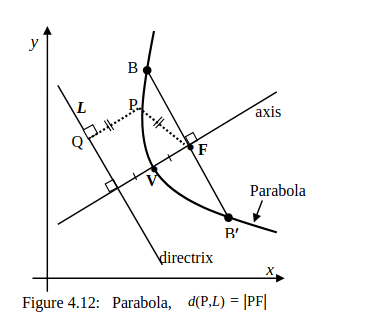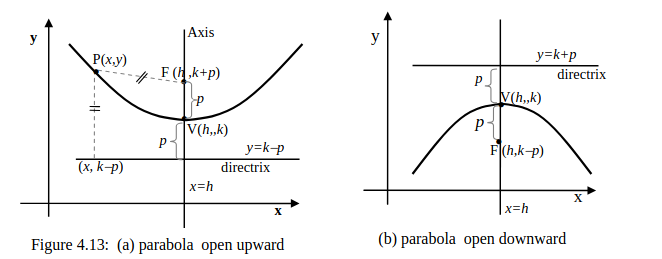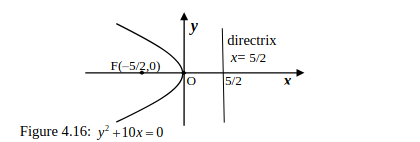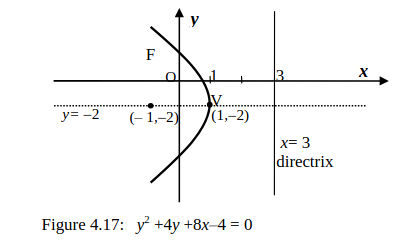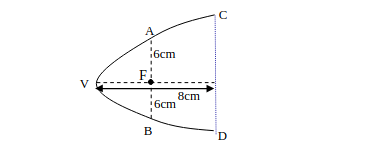Objectives: Objectives
By the end of this section, you should:
-
Know the geometric definition of a parabola.
-
Know the meaning of vertex, focus, directrix, and axis of a parabola.
-
Be able to find equation of a parabola whose axis is horizontal or vertical.
-
Be able to identify equations representing sec-parabolas.
-
Be able to find the vertex, focus, and directrix of a parabola and sketch the parabola.
